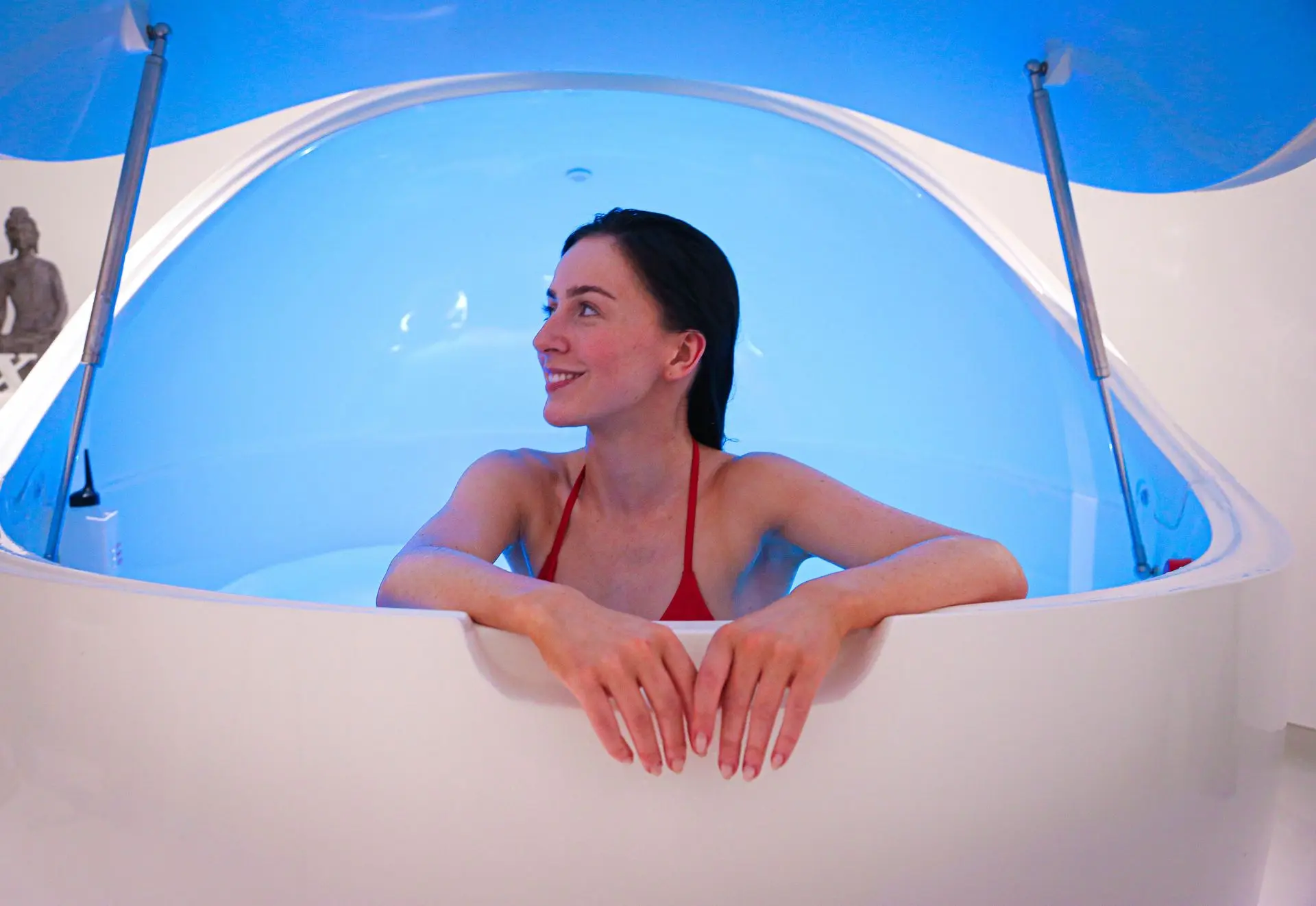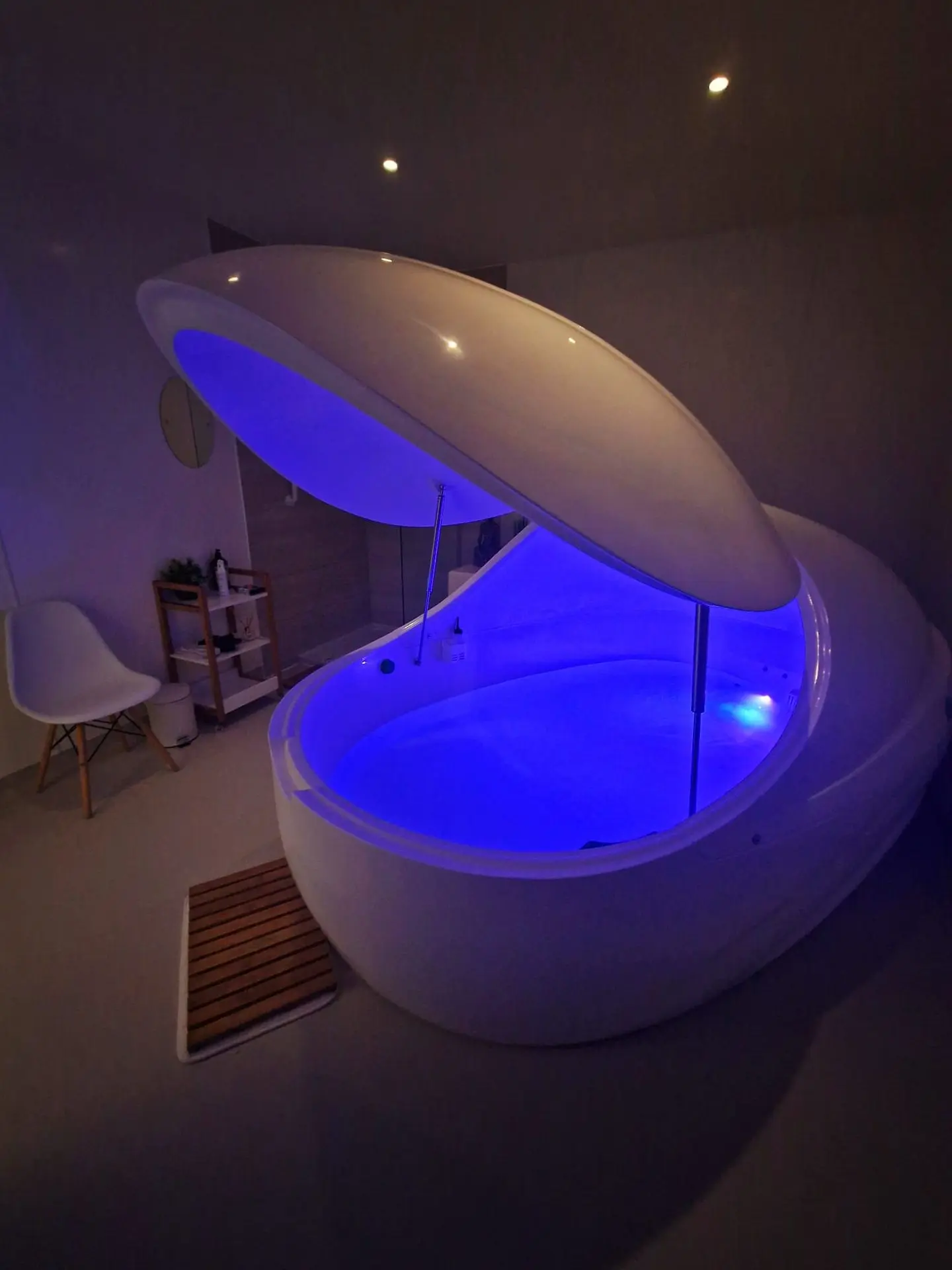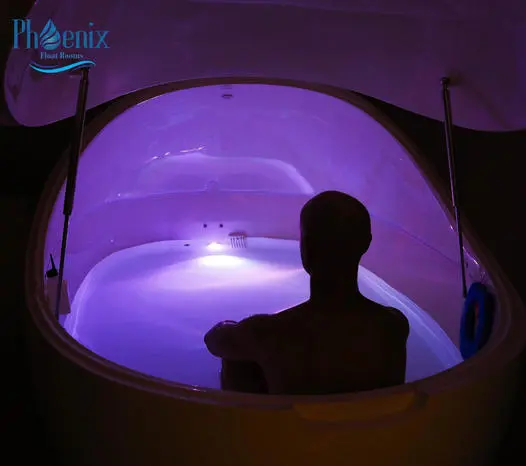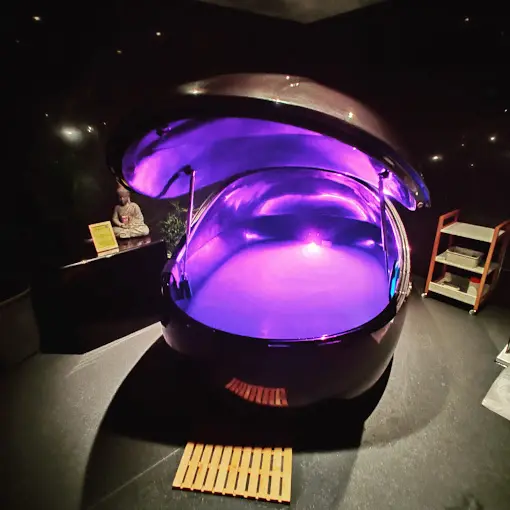Your guide to Floating!

What to Expect When You Come for a Float at Phoenix Float Rooms
Whether it’s your first float or you’re a regular, we want to make sure your experience is as relaxing and enjoyable as possible. Here's a quick guide to help you know what to expect when you visit us!
1. Arrival and Check-In
When you arrive, our friendly staff will greet you and guide you through a quick check-in process. If it’s your first time, we’ll explain the floating process, answer any questions you have, and make sure you’re comfortable with everything.

2. Preparing for Your Float
Before your session, you’ll be shown to your private room with your personal float tank. Each room has a shower, where you’ll rinse off before entering the tank. We provide everything you’ll need—towels, earplugs, and body wash.
- What to Wear: Most people float nude to get the full sensory deprivation experience, but the choice is entirely yours!
3. Stepping Into the Tank
Once you're ready, step into the float tank and close the lid.
* This step is optional, but closing the lid will block out light and sound, giving you the full sensory deprivation experience for deeper relaxation.
- After closing the lid, gently lie back. The water is filled with Epsom salt, making it incredibly buoyant, so you’ll float effortlessly! The temperature is set to match your skin, creating a sensation of weightlessness and helping you lose track of where your body ends and the water begins.

4. The Float Experience
For the next 60 minutes, you can completely relax. When you first enter the tank, the first 10 minutes will feature gentle music to help you acclimate and ease into the experience. During this time, the light inside the tank will be on, but you can turn it off at any time using the control inside the tank. It’s recommended to turn off the light within those first 10 minutes to fully immerse yourself in the experience and enjoy complete sensory deprivation.
After the music fades, the tank will become quiet and dark, allowing you to fully disconnect, meditate, or simply enjoy the sensation of floating.
You’re in control of your experience—if you prefer to have soft lighting or music throughout, just let us know, and we can adjust those settings for you.
- Time to Disconnect: This is your time to unplug from the world, so feel free to let go of stress and just be.
5. After Your Float
Five minutes before the end of your float, gentle music will play to signal that your session is coming to a close, allowing you to gradually ease out of the deep relaxation. When the music stops, it’s time to gently step out of the tank.
You’ll shower again to rinse off the Epsom salt, and afterward, you can take a moment to relax and get ready in our vanity room, sip some water or tea, and ease back into the real world.
6. How You’ll Feel
After your float, most people feel deeply relaxed, refreshed, and lighter—both mentally and physically. The benefits can last for days, from improved sleep to reduced muscle tension and stress relief.
Frequently asked Questions

What is Float Therapy?
Float therapy provides a unique experience of floating in a serene tank filled with body-temperature water and Epsom salts. By disconnecting from external stimuli, individuals can immerse themselves in deep relaxation and self-reflection. Many people find float therapy to be a calming and rejuvenating practice that enhances mental, emotional, and physical well-being.
This effective method aids in relaxation, stress relief, and boosting creativity. Those who experience float therapy often describe it as restful, revitalizing, and sometimes profound. Because stress exacerbates many health conditions, float therapy can serve as a beneficial treatment for various health issues. Research indicates that float therapy can alleviate stress, depression, anxiety, and pain, while also improving optimism and sleep quality. It is frequently utilized to support overall wellness.
Other terms for float therapy include sensory deprivation therapy, isolation therapy, floatation therapy, or restricted environmental stimulation therapy (REST).

How does Float Therapy work?
Float therapy helps you to achieve feelings of calm and deep relaxation by cutting you off from almost all external stimuli, including light, sound, and touch. The containers in which float therapy sessions take place are designed to isolate you completely from the outside world.
Method
Float tanks are sealed, light and soundproof tanks that are partially filled with Epsom-salt infused water. The water is heated to the same temperature as your skin, which makes it difficult to feel any separation between your body and the water itself. Because of the Epsom salts in the water, you float effortlessly on your back, without any danger of turning over or drowning.
During a float session, you typically spend up to 60 minutes inside the tank. There should be enough room in the tank to stretch out comfortably. If you are afraid of being in a small, dark enclosed space (a common fear), the tank can be left open, although most people find that they feel comfortable enough to close the tank after a few minutes.

What are the Benefits of Float Therapy?
Physical Benefits of Float Therapy
The physical benefits of float therapy can include a major reduction in the body’s production of stress hormones, including cortisol and adrenaline. When excess stress hormones are produced, the body becomes distressed and problems such as stress-induced chronic pain, high blood pressure, endocrine system disturbances, and gastrointestinal issues arise. In other words, floating can help with any health condition exacerbated or caused by stress, including:
- Chronic pain
- Fibromyalgia
- Hypertension
- Rheumatoid arthritis
- Insomnia
- Inflammation
- High blood pressure
- Slowed recovery from injury
- Migraines
- Circulation problems
The Epsom salts in a float tank also treat magnesium deficiency. Epsom salts are a form of magnesium, a mineral essential to human health. However, many people don’t get enough magnesium through diet alone—indeed, magnesium deficiency is a common health concern. In a float session, your body absorbs magnesium through the skin, which helps to correct any magnesium deficiency.

Mental Benefits of Float Therapy
The vast majority of people who experience a float session describe increased feelings of calm and well-being. Clients also often find that they feel a sense of increased clarity and alertness, as well as a heightened sense of creativity, capacity to visualize, awareness and ability to meditate. Float therapy is recognized as a particularly effective treatment for the effects of stress on the mind as well as the body.
Emotional Benefits of Float Therapy
If you are struggling with anxiety or depression, as well as more generalized emotional pain, a float session can be a useful way to feel more at ease in your own body. Because float therapy activates your body’s calming parasympathetic nervous system, it can bring you out of the heightened state of anxiety commonly known as fight, flight or freeze. Because there is nothing going on around you other than the nurturing sensation of floating in warm water, your body feels secure enough to relax and let go. This can help you process your emotions in a safe, comfortable space.

Are Float Tanks Sanitary?
The interior of a float tank is exceptionally sanitary. Each tank has up to 1,500 pounds of Epsom salt dissolved in the water, which raises the salinity to levels that are inhospitable to bacteria, including microbes and other pathogens.
The solution is sterilized between each session through a process of commercial-grade circulation, filtration and purification using a combination of UV (Ultraviolet Light) and food grade hydrogen peroxide.

Who should not use a Float Tank?
Float tanks are not recommended for some people. Anyone with one or more of the following conditions should not use float tanks: uncontrolled epilepsy, drug or alcohol intoxication, infectious disease, open wounds and serious psychological conditions.
Is one Float enough, or do I need Multiple Sessions?
Much like exercise, meditation, or therapy, floating is a practice. While your first float is often a pleasant and relaxing experience, the benefits typically deepen with each session. The full therapeutic potential of floating may only become apparent after multiple sessions. Many people find that floating 1-2 times a week helps them sustain the positive effects.